
| Welcome to the Club of Amsterdam Journal. For a long period of time brain researchers told us that our brains are not malleable. A person would be the same at 7 and 70. Recent technological developments allowed scientists to have “a closer look” AT the brain. These days, as Einstein’s relativity theory peaks IN popularity among ordinary people, researches conclude that the brain is actually malleable. But how do we define this plasticity? How do we change our brains? Does placing electrodes to our heads for brain feedback OFFER a solution to persistent problems such as drug addiction, aggression or obsessions? Present technologies offer a level of happiness that can be achieved through years of meditation. Could this be a solution to the illnesses our societies suffer as A RESULT of wrongs we have committed through a greedy relationship with technology? Aren’t we all sharing an overwhelming feeling that our societies are heading IN a wrong direction? Could using science and technology the “right way” be an answer to our critical questions?” In case you would like to hear more and also share your thoughts, visit our next event about the future of the Brain on March 19. Location: Waag Society, Nieuwmarkt 4, 1012 CR Amsterdam Felix Bopp, editor-in-chief |
Contemplation, science and technology

| by Iclal Akcay, Research Journalist |
| Neuroplasticity of the brain can be described as its ability to learn and alter its structure. This capacity for change is crucial since it may allow even persistent habits, such as addictions, to disappear when it is given enough stimulation. Given the complexity of the world and the problems we struggle to cope with, the understanding of plasticity becomes an important source of hope for a future of social human transformation. The development of computerized imaging techniques and technologies has finally made it possible to examine the brain through two or three dimensional, colorful images and examine its activities. This development has opened enormous possibilities for understanding and learning about the brain. The examination process can be simply compared to gaining access to the hardware of a computer to understand how it really works, instead of examining its parts and looking at its screen. Although this is an emerging field that may require years of interdisciplinary research to reach conclusions, brain plasticity is one of the insights that is already changing our fundamental views of the brain’s workings. But change also requires an optimum or a model. Just as building a model requires creativity from its builder in terms of choices she/he has to make, some psychologists and neuroscientists chose a high ranked Buddhist monk’s brain as an optimum. They also draw parallels between science and Buddhism for further research. Like other contemplative practices, Buddhism offers an awareness for getting rid of the burden of destructive emotions that distort human perception and observation, building a path to genuine happiness. Although the dialogue and relationship between different schools of Buddhism and some scientists has created controversy, more research is being increasingly devoted to the methods of Buddhist contemplation and its relationship with science. Contemplation is a way of achieving a level of objective distance to one’s own emotions and of mastering a so-called pure perception of reality. Buddhist contemplation has special techniques and methods for training the mind and gaining control over one’s emotions and happiness. Gaining this ability, however, requires years of devotion to disciplined training and meditation. The benefits of contemplation were earlier reflected in biofeedback as alternative medicine. Biofeedback was the first attempt to translate mindfulness into what was until then considered a purely scientific space. Signals from the body were used as feedback for a patient to improve bodily functions or alter brain activity. This laboratory process can now be accepted as the beginnings of today’s research and its translation to technological methods. Neurofeedback and other so-called mind harmonizing methods are the technological world’s answers to these dialogues with an inspiration gained from contemplation. Neuroscientists , psychologists, and other interdisciplinary scientists who are willing to commit to building a dialogue between contemplative practices and the scientific method may not yet have anything to say about the gadgets, software and laboratory practices that are aimed at calming, harmonizing and optimizing the brain, but such technological answers to the need of altering or improving one’s brain also signal a change in the world of technology. According to David F. Noble (America by Design: Science, Technology, and the Rise of Corporate Capitalism, Oxford University Press) “From the start, modern technology was nothing more nor less than the transformation of science into a means of capital accumulation, through the application of discoveries in physics and chemistry to the processes of the commodity production.” Although this observation is about the origins of modern technology going back to the end of the 19th century, it remained valid at least for some parts of the technological developments throughout the last century. Technology’s continuously accelerating speed in feeding society and production space with new, complicated models contributed to the creation of a new human role as a spectator instead of participant in society. But the incentive of capital accumulation is -albeit slightly- losing ground in favor of improving the human condition with neurofeedback or other related technology based mindfulness practices. Meditation used to be seen as a practice specific to spiritual devotees. Not only is this perception changing, but it is also gaining space in Western society. Once the dialogue between neuroscientists and Buddhist scholars gains momentum, it might be possible to look for further translations of its benefits and a relationship to technological practices. Iclal Akcay is the moderator at our next event about the future of the Brain |
Next Event

the future of the Brain
Thursday, March 19, 2009
Registration: 18:30-19:00, Conference: 19:00-21:15
Location: Waag Society, Nieuwmarkt 4, 1012 CR Amsterdam
The conference language is English.
Supporter: De Waag Society
Our speakers are
Antonino Raffone, PhD, Researcher in Cognitive Neuroscience, “Sapienza” University of Rome and RIKEN Brain Science Institute, Japan
Neural correlates of meditation states and traits
Venerable Kaye Miner, Maitreya Institute Amsterdam
Consciousness at the Crossroads or Mind in Tibetan Buddhism
Viona Wijnen, PhD, Neuropsychologist and Researcher, Alpha-Up | Brain Balancing Institute, Amsterdam
How the brain can heal itself – The promise of neurofeedback
Rob van Kranenburg, Innovation and Media Theorist
Brainspace
Moderated by Iclal Akcay, Research Journalist
Club of Amsterdam blog

News about the Future

European Year of Creativity and Innovation 2009 The European Year of Creativity and Innovation aims to raise awareness of the importance of creativity and innovation for personal, social and economic development; to disseminate good practices; to stimulate education and research, and to promote policy debate on related issues. Creativity and innovation contribute to economic prosperity as well as to social and individual wellbeing. |

Carbon Dioxide Capture and Storage
To slow global warming, scientists are exploring ways to pull carbon dioxide from the air and safely lock it away. Trees already do this naturally through photosynthesis; now, in a new report, geologists have mapped large rock formations in the United States that can also absorb CO2, which they say might be artificially harnessed to do the task at a vastly increased pace.
The report, by scientists at Columbia University’s Earth Institute and the U.S. Geological Survey, shows 6,000 square miles of ultramafic rocks at or near the surface. Originating deep in the earth, these rocks contain minerals that react naturally with carbon dioxide to form solid minerals. Earth Institute scientists are experimenting with ways to speed this natural process, called mineral carbonation. If the technology takes off, geologic formations around the world could provide a vast sink for heat-trapping carbon dioxide released by humans
C.L.E.A.R. Village Lab
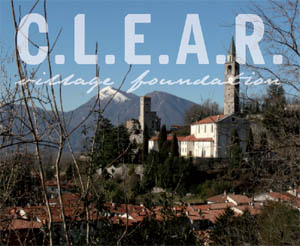
C.L.E.A.R. Village Lab
co-design a real-life sustainable village
In a nutshell
C.L.E.A.R. Village Lab is a collaborative design event: C.L.E.A.R. Village Foundation‘s first step to co-create a groundbreaking sustainable village. A ‘dream team’ of up to 100 professionals from complementary industries will be assembled, working together to produce a replicable blueprint. Involvement will push your sustainability work far beyond your existing experience.
Your participation in the project will confirm your valuable contribution and commitment to sustainable design, as well as connecting you with other key figures in the arena. As you bring one of the world’s most inspired eco-design projects to life, you will gain a rewarding and memorable experience that will bring you prestige, insight and new business opportunities.
C.L.E.A.R. Village Lab experience
C.L.E.A.R. Village Lab is immersive and intense. Putting participation first, the schedule will evolve organically, guided by four renowned thought leaders. With no rigid structure or scheduled breaks, the team can set its own agenda, working on the areas it finds most rewarding and synergetic.
Working towards a physical outcome, we start with as few preconceptions as possible. This will let the team build in sustainable systems and designs from the ground up. Starting with the bigger picture, the team will drill down to specific components and features.
During group work and discussion, C.L.E.A.R. Village‘s illustrators will bring concepts to life on the fly. Other real-time technologies, such as live text feedback and collaborative 3D modelling, will enhance communication and engagement.
C.L.E.A.R. Village Foundation will then act on the decisions of the team, moving the project forward to its next phase.
The Future of Forests

by Harry Sauer Futuro Forestal
Why we need Forests
Some scientists say, that climate changes have existed on Earth since its creation, and they are perfectly right. However, when they say that mankind is not contributing to it, they are wrong. There is a lot of evidence that carbon dioxide and methane are contributing big time to global warming.
Nature provided two perfect mechanisms for the atmosphere to balance out the impact of methane and carbon dioxide: oceans, where wind and waves wash those substances out of the air and have them neutralized by algae and micro organisms; and trees, where carbon is stored away in solid matter.
Better than a tree is an entire forest, which provides a lot more functions such as water management inside the soil, water management by evaporation and creation of rain, which also means clear portable water, protection of the soil against erosion and finally giving home to a huge biodiversity of plants and animals, who’s symbiosis is still far beyond what is known by science so far.
Anyway, there is no question, that the forest is of big importance to maintaining an environment where mankind can survive. In the end most of the surfaces of the land masses of the globe were originally covered with forests for a reason. It also makes no difference whether we talk about northern forests close to the arctic circle, the forests of the industrialized northern hemisphere or tropical rain forests. Each of these forests are in big demand: in industrialized regions for filtering the contamination out of the air right where it is happening, to improve the SMOG situations in cities from Detroit to Peking; in the Mediterranean where the ancient romans deforested wide countrysides, to stop erosion and rebuild the water management; and in the tropics, to stabilize the global weather all together and to prevent more hurricanes and other cyclones.
Reforestation, where the Damage is Done
All over the world there is a large demand for rebuilding the natural cover of the surface with forests. Luckily there are meanwhile quite some initiatives all over the planet. Locally there are programs of administration giving away trees for free to motivate people to plant trees in their backyards, and yes, every single tree counts. Governments set up programs to donate thousands of trees to reforest agricultural or pasture land. Though started with a lot of enthusiasm some of these programs fail, as the poor little tree, once planted is often left alone thereafter.
But there are more and more professional organizations like Futuro Forestal, who specialize in tropical forests, or the Arbour Day Foundation, specializing in Northern American forests, who show a sustainable approach. Reforestation is run here in a professional way, starting with a business plan, searching the right lot of land, planning the right mix of trees best suited for the soil and climate conditions and planning a layout that provides a reasonable forest management platform, taking biodiversity, firebreaks and management access into consideration to an equal extent.
Depending on the preconditions of the site Futuro Forestal either chooses a mix of local species with different growth rates and specifications which are known to thrive well together, to form a perfect ecosystem, which also helps to prevent all kinds of pest on a natural base, and which work well in a schedule of thinning and harvesting after about 30 years. A similar approach can be reached with a patchwork plantation style approach, where islands of about 80% of the total area are reforested with a single species, which are embedded into a framework of 20% of the area reforested with a mix of local species giving home and shelter to a wide biodiversity and meant to permanently last, while only the plantation areas will be harvested upon maturity.
Why Manage Sustainable Reforestation?
Ecological activist may demand to leave the forests to themselves and have nature have a go on closing their scars. Unfortunately the example of the Caribbean islands or Africa shows, that this is no way to go. The secondary vegetation usually is a worthless bushland of Cassi bush. Not only worthless in the economical sense, but also for the environment all together. Those bush lands give home to goats, if at all and have no impact on the water management at all. So human action is required. Planning and managing a forest is an ongoing process and involves expenses throughout the entire period of growth. The right planning in the first step, the cleaning around the young trees until they are tall enough to survive on their own, the thinning to give them space for growth and extension, the permanent monitoring for pest, forest fires and the action taken against it is a serious task to ensure the survival of the forest.
The guiding objective – production of fine tropical hardwoods in a ecologically sound, socially just and economically sustainable manner – is articulated clearly, as is the market justification for the work that is outlined above. Harvesting the timber on the areas in a random schedule makes sure, that the entire area remains covered with trees of different age and state of growth throughout the revolving cycle. Producing wood of high quality and bib demand makes sure, that the carbon bound in the wood there is safe for the next 100 years or so in form of a wood floor, a yacht deck, a chair or a staircase, while the next generation of trees is already binding more carbon dioxide from the atmosphere.
How to Protect Reforesting Projects and Existing Forests
Every year large areas of forests are lost due to forest fires of many creations. Some are set for legal reasons, as laws prevent construction inside forests in some countries. Creative minds tend to burn down the forest to make space for resort or residential projects by paying people to set the forest on fire. In those cases an adjustment of the law, for example, by permitting construction in those areas only under the condition of reforesting twice the area elsewhere would solve the problem and even benefit the environment.
In the far bigger number of cases it is jut the rural population looking for income alternatives, and selling beef to fast food chains is just too tempting. Unfortunately this is doing twice the damage: burning down the trees releases huge amounts of carbon dioxide into the atmosphere and the cattle thereafter produces tons of methane gas. Education and alternatives need to be employed here.
Great Britain’s HRH, Prince Charles, is doing a lot in this sector with The Prince’s Rain Forest Program to protect existing forests. In the field of reforestation Futuro Forestal has an excellent record of just integrating the local population into the programs, keeping whole families employed on good salary for long terms and having them living inside the projects. Thus they have a mutual interest to maintain the forest, instead of setting it on fire, they guard it and man watchtowers to take fast action in case a forest fire is discovered.
Higher and Better Use of Forests
Forest projects promise a good and solid return on investment, however it is pretty obvious that a forest needs 30 years to grow and there is only one thinning cut of round wood after about seven years to create some revenue. Thanks to Kioto, carbon trade offers an early income stream by trading carbon points throughout the entire growth period of the forest. Still this is not the only chance to create revenues out of forests. A number of forest lodge resorts show, that tourism opens chances to use the forest during it’s growth period in multiple ways. There is a great many of second and third uses which can easily be integrated into a forest program. As forest projects are by nature rather large, a small amount of the area can be set aside for residential or resort projects to bring people to the forests, both for recreational reasons as well as for education about the environment To upgrade a basic residential or resort project, there can be added sub projects such as:
- wildlife park
- adventure park
- trail riding
- polo field
- golf course
- shooting range
- aquaculture projects
- arts and crafts centers
- energy production
- harvesting of natural plants for pharmacy and cosmetics
- mixed cultures with spices, energy seeds, cacao or other cultivated species
For each project there is an individual approach to be chosen based on the location, access to transport, water and energy, soil quality and weather conditions. Futuro Forestal for example owns a lot of land in Santa Rita, Panama, just about half an hour from Colon. Part of the land is home to natural tropical forest with an extremely high bio diversity. On the pasture land reforestation activities have been started and brought the land to a level where a JV or a sale to a development entity can be considered. The lot encompasses 350 hectares and might give home to a 200 bedroom hotel with a 250 villa residential park and a jungle cottage camp of 50 units combined with riding facilities.
The riding trails can lead through a wildlife park, where local and imported species might be raised and displayed. Imported species may contribute to the resort’s restaurants once the density gets too tense for the wild life park, endangered species like the white tail deer can be released into nature every now and then under supervision of skilled and experienced veterinaries and zoologists.
A shooting range and a hunting park may also be taken into consideration.
An aquaculture project, using one of the creeks inside the property, raising sturgeon and producing caviar would ad value to the project in various ways: Sturgeon and caviar sales would create an extra revenue long before the forest can be harvested, by using it inside the resort in restaurants as well as in spa treatments with caviar. As much as clients may be found in bundle offers with cruise ship companies, caviar and fish may be sold right there catering the ships for the cruise.
Collecting certain other substances from the forest like rosewood oil can even extend the range of spa products for the internal use as much as for creating an own brand of natural cosmetic and health care products. As a general concept, the side products of the caviar production and the substances like rosewood oil can contribute to a spa health and beauty line, making the resort a high end living and recreation spot with a range of permanent revenue streams, which can be used to maintain the surrounding forest at the best possible level.
Developing Santa Rita in this way would set standards for future projects and is just one potential option which may be subject to variations depending on the natural environment as much as transport links, climate and other features. Next to the benefits for nature and climate and the attractive revenues for the owners such a project would also have a high educational impact for the tourists visiting and would present a perfect platform for ecological congresses to present showcases and develop further alternatives.
Forests always were an attractive investment opportunity. Kings and nobility always used to maintain big forests as they were used to think on long terms and future generations. The latest development on the stock markets lead to a different approach where investors were looking for fast spinning investment opportunities into electronics, new markets, new technologies, financial instruments and forgot about classical investment options. The crisis at the financial markets show, that those investments always have a high risk involved also. Forest projects on the contrary have a rock solid revenue development of an average of 10% and have not been shaken at all by the crisis. Adding value as described for the Santa Rita Project by Futuro Forestal, will even boost this projections, though only using classical elements in a new combination and on top benefiting the environment locally and contribute to the fight against global warming globally.
Special Announcement: the future of Connectivity

the future of Connectivity
The Club of Amsterdam visits the RSA in London
Thursday, June 25, 2009
Receptionn: 18:30-19:00, Conference: 19:00-21:15
Location: Royal Society for the encouragement of Arts, Manufactures and Commerce (RSA), 8 John Adam Street, London WC2N 6EZ
Supporters: LogMeIn, RSA
Egbert-Jan Sol, CTO, TNO Science and Industry, co-founder/1st chairman, DSE
Peter Cochrane, Co-Founder, Cochrane Associates
Evolving Connectivity
Hardy F. Schloer, Owner, Schloer Consulting Group
Human Connectivity at the Event Horizon of new AI Technologies
Moderated by James Cridland, Head of Future Media & Technology, BBC Audio & Music Interactive
Recommended Book

A Symphony in the Brain: The Evolution of the New Brain Wave Biofeedback
by Jim Robbins
In the decade since Jim Robbins’s A Symphony in the Brain was first published, the control of our bodies, brains, and minds has taken remarkable leaps. From neurofeedback with functional magnetic resonance imaging equipment, to the use of radio waves, to biofeedback of the heart and breath, and coverage of biofeedback by health insurance plans, the numerous advances have driven the need for a revised edition to this groundbreaking book.
In A Symphony in the Brain, Jim Robbins traces the fascinating, untold story of the development of biofeedback. Discovered by a small corps of research scientists, this alternative treatment allows a patient to see real-time measurements of their bodily processes. Its advocates claim biofeedback can treat epilepsy, autism, attention deficit disorder, addictions, and depression with no drugs or side effects; bring patients out of vegetative states, even improve golf scores or an opera singer’s voice. But biofeedback has faced battles for acceptance in the conservative medical world despite positive signs that it could revolutionize the way an incredibly diverse range of medical and psychological problems are treated. Offering a wealth of powerful case studies, accessible scientific explanations, and dramatic personal accounts, Robbins remarkable history develops our understanding of this important field.
Chris Jacobs Vertical Farm
One of the first designs of its kind, a compelling vertical farm project was undertaken by Chris Jacobs in cooperation with the grandfather of skyscraper farm concepts: Dr. Dickson Despommier of Columbia University. His ideal: all-in-one eco-towers would be actually produce more energy, water (via condensation/purification) and food than their occupants would consume. His mission: to gather architects, engineers, economists and urban planners to develop a sustainable and high-tech wonder of ecological engineering.
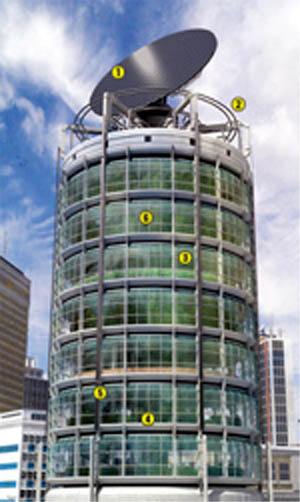
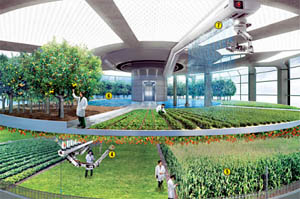
Futurist Portrait: Daniel Burrus

Daniel Burrus is one of the world’s leading technology forecasters and business strategists, and is the author of six books, including the highly acclaimed Technotrends, which has been translated into over a dozen languages. In 1983, Burrus was the first and only futurist to accurately identify the twenty technologies that would drive two decades of revolutionary change. Since then, he has established a worldwide reputation for his exceptional record of predicting the future of technological change and its direct impact on the business world. He has helped hundreds of clients develop successful competitive strategies based on the creative application of leading-edge technologies, and has delivered over 2,000 keynote speeches to corporations, associations, and professional organizations worldwide. The New York Times has referred to Daniel Burrus as “one of America’s top three business gurus in the highest demand as a speaker.” He is the founder and CEO of Burrus Research, a research and consulting firm that monitors global advancements in science and technology-driven trends to help clients better understand how technological, social and business forces are converging to create enormous, untapped opportunities.
Daniel Burrus: “Competition is way too difficult, and what happens is that people, services, and entire industries become commoditized. Then, businesses are left competing on price. I strive to differentiate myself from the marketplace and de-commoditize. In addition to price, you can compete on reputation, time, knowledge, loyalty, image, service, quality, design, values, experience, and innovation. I use technology to change the rules of how you compete in each of these areas. I redefine the product, the customer, and how you can compete using technology as my tool.”
How do you prepare for the future?: “I accurately predict the future. How do I do that? I leave out the parts I could be wrong about. You need to visit a place that I call the visible future. It is a place you can clearly see, but you have to take the time to look. Most of us never take the time to look. The visible future is the fully predictable future. The more you look and ponder the future that you know is coming, the more you can capitalize on that future. Rather than problem solving, I look at the visible future and ask myself, “What are the predictable problems that I am going to have?” Then, I use technology to redefine the problem before I encounter it. I disagree with those who say a problem is an opportunity in disguise. A problem is only an opportunity if you see it before it happens. We need to focus on being “opportunity managers” and not crisis managers. Too often, we spend way too much time crisis managing. We need to be preactive to future known events by addressing the visible future. We must solve tomorrow’s problems today. When planning for the future, remember that the present is obsolete.”
Agenda
  Our Season Program 2008 / 2009: April 23, 2009 the future of Games Location : Cultuurhuis Diamantslijperij, Tolstraat 129, 1074 VJ Amsterdam May 28, 2009 the future of BioMed Location: Syntens, De Ruyterkade 5, 1013 AA Amsterdam [Building of the Chamber of Commerce] 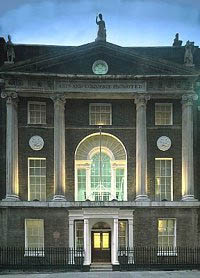 The Club of Amsterdam visits the RSA in London June 25. 2009 the future of Connectivity Location: Royal Society for the encouragement of Arts, Manufactures and Commerce (RSA), 8 John Adam Street, London WC2N 6EZ 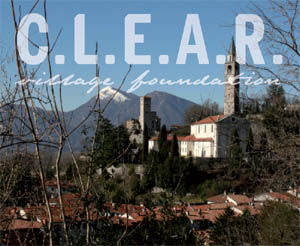 C.L.E.A.R. Village A series of events to share knowledge and co-design a real-life sustainable village September 1–2, 2009 C.L.E.A.R. Village Lab C.L.E.A.R. Village Forum Location: DGI-byen, Tietgensgade 65, DK – 1704 Copenhagen V, Denmark |





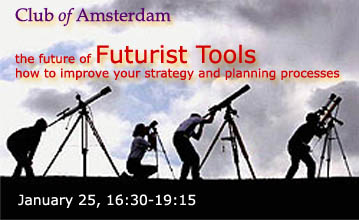


Customer Reviews
Thanks for submitting your comment!